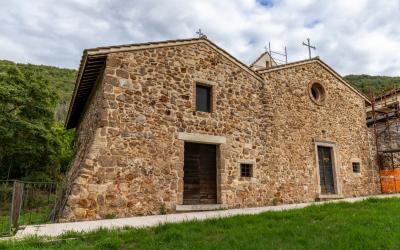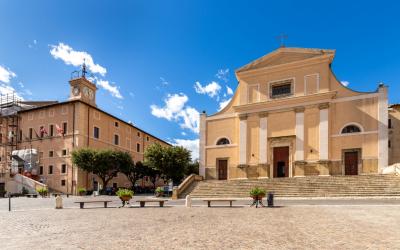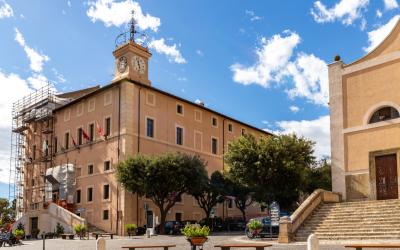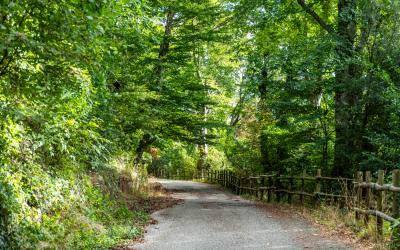The seat of a dicastery of the Vatican Curia in Allumiere
Palace built in 1580 to seal the importance that the alum quarries had for the Papal State. In fact, it was Pope Gregory XIII who, visiting the Allumiere mining complex, wanted to give the mining complex a prestigious headquarters, capable of hosting the management of the mines, the accommodation of the contractor, the govenor and the various papal personalities who frequented the area.
The building currently houses the Municipal Archaeological Naturalistic Museum “Adolfo Klitsche de La Grange” which occupies the entire main floor and part of the ground floor. It is also home to the municipal library of the Sports Union and various cultural associations.
The facade of the building is simple in its architecture with a large double staircase with symmetrical ramps to access the main entrance and, at the top right, the clock tower stands out, surmounted by a wrought iron structure that houses a bell.
A spiral staircase, located to the left of the entrance door and at whose foot is the coat of arms carved in pietra serena of the treasurer of the Apostolic Chamber Mons. Callicola, leads to the mezzanine, the ancient quarters of the doctor and the chaplain, and then to the main floor. The rooms on this floor were reserved for the contractor, the govenor, the treasurer and the Popes who visited the alum mine complex. In the first hall there is an altar, built inside a large frescoed wall cupboard, commissioned by Pope Pius IX in 1777.
Following the formation of the Italian State, the Reverenda Camera Apostolica was forced to leave the mining complex with all the annexed buildings, including the Palazzo Camerale which was purchased by the Municipal Administration in 1950.











